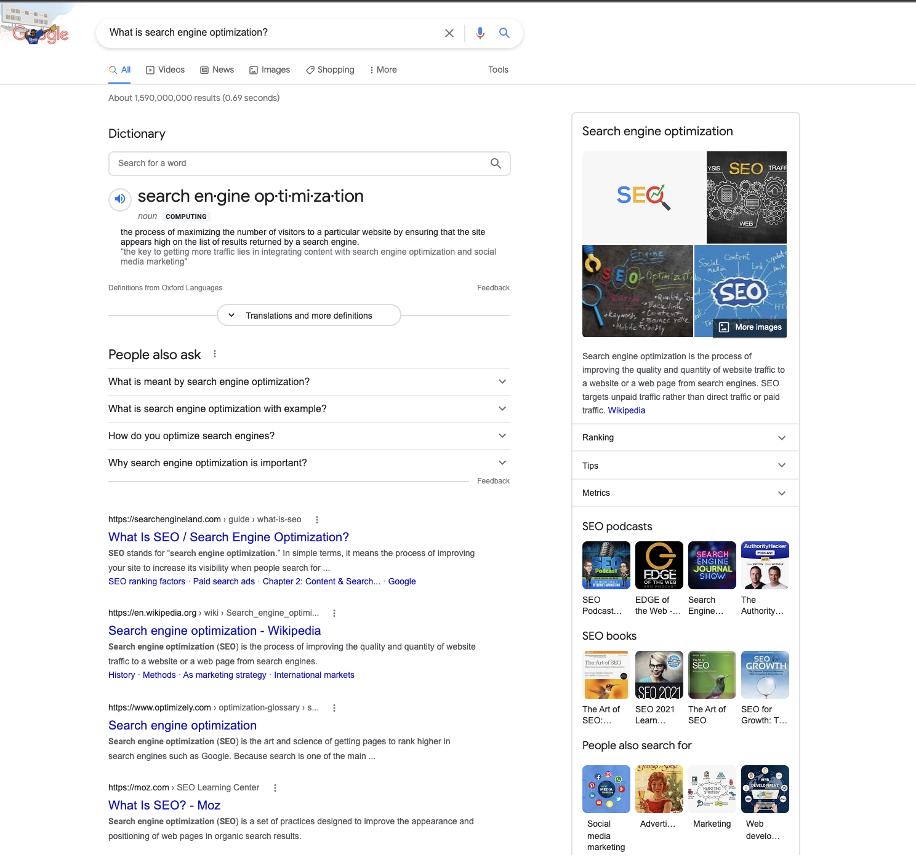How we got 70% of our traffic from organic search


As a pillar of our digital content strategy, we knew we wanted to talk about search engine optimization (SEO) in this series. After a quick look at Google Search Console, we noticed that our site visitors were searching and matching with us for terms like:
This makes sense—we have awesome glossary articles linked above for these terms. Our glossary not only helps boost search traffic but helps funnel new visitors to our site.
Linking to glossary terms and site links within copy as we are here, helps boost search presence.
However, a common misconception about SEO is that anything and everything should be linked.
Tip 1: Try and link keywords that are relevant to the piece, not just on words that happen to be in a glossary or content library.
We also found that we were ranking for terms like:
- SEO definition
- SEO explained
- SEO meaning
- SEO examples
We love talking about our DXP, but visitors don’t search for “DXP”, they search for “CMS”.
Tip 2: Look for high volume search terms, even if they don’t align with your existing content or overall business goals. Meeting your visitors where they are helps educate and expose them to your brand. For example:
Search queries starting with “What is...” are generally top of funnel visitors looking to learn and educate themselves. Queries starting with “Why is...” are often top to mid-funnel visitors looking for explanations of business goals, challenges, thought leadership, etc.

We use our glossary to help reach those top of funnel visitors and our Insights page to bring in more mid-funnel visitors.
To improve SEO and give visitors what they are looking for when searching terms you rank for, ask yourself:
Is my content written in an SEO-friendly way that helps me rank higher in searches?
Tip 3: Only publish pages when you are ready for them to be public. Pages will immediately be indexed for content and search recommendations, so if you publish and re-edit, it can cause problems.
Is my description engaging enough to make people want to click on links that rank well?
Tip 4: Content descriptions should be as short and explanatory as possible, and they should be close to what people might search. For example, us changing:
"Digital Experimentation playbook" to "13 examples of great A/B tests"
Tip 5: Don’t use internal terminology or acronyms.
Is my content enticing enough to make people want to stay on the page?
Tip 6: Try writing things in list format and break up the content with images, illustrations or even GIFs.

Have I waited long enough to see results?
Tip 7: Give it time.
On day one, discovery is not going to be perfect. You need time to collect data so you can start making important decisions. Reviewing reports for insights is just as important as editing content on your site—but be patient.
Learn more about how we considered SEO in the development stages of our web relaunch from our Global Growth and SEO Strategist, Michiel Dorjee in Content Intel—Episode 5: Development and SEO for Website Relaunch:



